Takatome Castle
-Brave and tragic will of veteran lord-
Name: Takatome Castle (Takatome-jo)
Alias:
Place: Nakamurota-cho Takasaki city, Gunma
Location: 36.39488379465576, 138.8899721317194
Type: Mountain Castle
Built: Around 1500?
Remaining remnants: Clay walls and dry moats
Title:
45 minutes drive from Kanetsu Jidoshado Expressway Maebashi interchange to parking space at the site of Haruna Fruit Line road at backward of castle
Type: Mountain Castle
Built: Around 1500?
Remaining remnants: Clay walls and dry moats
Title:
Brief History
Takatome castle (鷹留城) is located at the hill of about 100 meter height from hillside, at the south edge of long ridge spreads southward from Mt. Haruna. Castle site is about 10 kilometer southward from the caldera of Mt. Haruna, and just at the north of former Haruna town exists 15 kilometer west from Maebashi city or Takasaki city.
The place of Haruna town is where Karasu-gawa river, a major tributary of Tone-gawa river, flows from mountain area into Kanto plain. At this point road from Agatsuma area currently used as Route 406, from Karuizawa area passing Nidokami-Toge pass toward Matsuida area across Kazato-Toge pass meet. This place is exactly as a gate of Takasaki area and Maebashi area from westward.
Origin of Nagano clan
Precise year is unknown but Takatome castle might be built by local lord Nagano clan around 1500 as their main base. The origin of Nagano clan is not clear but they insisted as the descendant of Narihira Ariwara (825-880), a high class noble and Japanese poet in 9th century. But there is no relationship between them and supposed to be a descendant of Ishinokami clan.
As Nagano clan was not a retainer of Kamakura Shogunate or Muromachi Shogunate, the history of Nagano clan prior to 15th century is not clear. But local lords of Kozuke province (Gunma prefecture) formed an alliance named as “Joshu Ikki” and acted together, and Nagano clan gradually grew their power in this alliance.
In the latter half of 15th century, among the conflict of Kamakura Kubo Highness and its counsel Uesugi clan, Kozuke province became the territory of Yamanouchi Uesugi clan, the main family of Uesugi clan and held Kanto Kanrei position. Yamanouchi Uesugi clan needed their own force used the alliance of local lords as their army through Nagano clan, other than their own retainer Nagao clan.
Growth of Nagano clan and build of Takatome castle
At that time Yamanouchi Uesugi clan fiercely fought against their relative Ogigayatsu Uesugi clan or Kageharu Nagao (1443-1514), a brilliant tactician rebelled against Yamanouchi Uesugi clan. At these battles Nagano clan might fight as the core part of Yamanouchi Uesugi army, and lost leaders.
Looking at the confusion of Nagao clan which had territories around Maebashi city, Nagano clan gradually expanded their territory. Originally Nagano clan resided at south ward of Minowa castle (Gunma prefecture) but they built Takatome castle at westward and Minowa castle at northward in the beginning of 16th century to secure their territory.
At first Norinari Nagano (?-1530?), the leader of Nagano clan in the beginning of 16th century, resided at Takatome castle. But later Norinari Nagano also built Minowa castle which was more closer to Maebashi area and Tonegawa area and moved there, then handed Takatome castle to his eldest son Nariuji Nagao (?-?).
Around 1520, Hojo clan which was originally the warlord of Izu peninsula (Shizuoka prefecture) but expanded their territory into Kanto region from westward captured Edo castle (Tokyo metropolis) from Ogigayatsu Uesugi clan then turned northward. Nagao clan at Kozuke province connected with Hojo clan and left Uesugi clan, but Nagano clan still remained at Uesugi clan and suppressed Nagao clan.
Finally Nagao clan returned to Uesugi clan this time, but Nagano clan captured the part of former territory of Nagao clan and surpassed it. Due to the expansion toward east Minowa castle became the main base of Nagano clan, and Narimasa Nagano (1491-1561), the younger brother of Nariuji Nagano, succeeded Nagano clan and expanded Minowa castle. But Takatome castle was also strengthened as an important branch castle.
Structure of Takatome castle
The basic structure of Takatome castle resembles to Minowa castle, placing terraces in line at narrow hill and built corridor terraces at both side. But compared with Minowa castle which was reformed by various holders the structure of Takatome castle is simple. Minowa castle has long dry moat wholly surrounds core part, buffer areas and stone walls, but Takatome castle has dry moat only separate the ridge crosswise and no clear buffer area.
Central area of the castle is a rectangular one of about 80 meter long and 40 meter wide, which is totally flat one without clay wall or turret basement. Secondary area is a 50 meter long and 15 meter wide one at the south of central area, and third area is an oblong shape one of 40 meter long and 20 meter wide further at the south.
Surrounding central area and secondary area layers of terraces exist. East side of this part is carefully built by four layers of terraces, where directly faced the road from hillside area. North edge of this part is a weak point of the castle connected to backward mountains, thus this part is securely separated by the line of huge dry moats over 10 meter wide.
Third area at the south edge of the castle is also separated by dry moat from core part of the castle and looks like an independent front fort. Corridor area surrounds the third area at the peak, and roads from hillside area are connected to this corridor area. The size of the castle is about 400 meter long and 250 meter wide, and the size of castle itself and structure are next to Minowa castle.
Peak period of Nagano clan
Narimasa Nagano had over 10 daughters and let them marry with surrounding local lords of middle part and southwest part of Kozuke province, such as Obata clan at Kunimine castle (Gunma prefecture), Wada clan at Wada castle (Gunma prefecture, later Takasaki castle), Kanai clan at Kuragano castle (Gunma prefecture) or Nagano clan at Umayabashi castle (Gunma prefecture, later Maebashi castle).
Local lords united under Nagano clan was called as “Minowa-Shu”, and held one fourth of Kozuke province. Nagano clan gradually had the character of an independent warlord, but still followed Yamanouchi Uesugi clan and fought for the clan. But at this time ancient regime of Kanto region was suppressed by newly rising Hojo clan.
In 1546, Yamanouchi Uesugi clan and Ogigayatsu Uesugi clan suffered severe defeat at the battle of Kawagoe castle (Saitama prefecture) before Hojo clan. Ogigayatsu Uesugi clan was ruined at this battle, then Hojo army next aimed at Yamanouchi Uesugi clan at Kozuke province.
Involved into conflict of strong warlords
By the failure of support to Shiga castle (Nagano prefecture) attacked by Shingen Takeda (1521-1573), the warlord of Kai province (Yamanashi prefecture), the authority of Yamanouchi Uesugi clan was totally lost. Hojo clan ascended their army into Kozuke province, then local lords of Kozuke province turned to Hojo clan and Norimasa Uesugi (1523-1579), the leader of Uesugi clan, exiled to Echigo province (Niigata prefecture) governed by Kagetora Nagao (1530-1578, later Kenshin Uesugi).
According to military tales Nagano clan still kept the loyalty to Uesugi clan and stood against the invasion of Hojo clan and its ally Takeda clan for several years, then drove back the attack of Shingen Takeda six times. But this might be fiction and Nagano clan once turned to Hojo clan and this turn lead to the exile of Norimasa Uesugi to Echigo province.
In 1560, Kenshin Uesugi who accepted the exile of Norimasa Uesugi intruded into Kanto region, to restore the authority of Kanto Kanrei and Yamanouchi Uesugi clan. At this time Narimasa Nagano returned to the side of Uesugi clan and accompanied with the military operation of Kenshin. But Kenshin Uesugi could not fall Odawara castle (Kanagawa prefecture), the main base of Hojo clan, and retreated from Kanto region.
Brave and tragic will of veteran lord-
During this battle, Hojo clan still fought at Uesugi side lords at Musashi province (Saitama prefecture) requested its ally Shingen Takeda to attack Narimasa Nagano, as a restraint of Uesugi army. Shingen intended expansion to Kozuke province accepted it and attacked Nagano clan.
Unfortunately just at this time Narimasa Nagano died in ill. According to military tale, Narimasa made a will to his son Narimori Nagano (1544-1566) stating “it is not necessary to build a large tomb and grave marker, and to have a funeral ceremony. Do not surrender to enemy, offer military achievement to the tomb, and manfully died in the battle in case of misfortune. That is the best devotion to the died father”.
Following this will Narimori Nagano desperately fought against Takeda army and once broke it. But the loss of brave and experienced Narimasa Nagano was fatal then local lords under Nagano clan turned to Shingen Takeda one by one due to the plot. Kenshin Uesugi could not support Nagano clan well then gradually Nagano clan became isolated.
End of Nagano clan and afterward of castle
Finally in 1566, Shingen made total attack to Nagano clan. To secure the backward Takeda army attacked Takatome castle at first and fell it. Next Takeda army surrounded Minowa castle, then Narimori Nagano besieged at the castle attempted last fight but finally killed himself with retainers before a mortuary tablet of Narimasa Nagano.
Now Nagano clan disappeared following the will of Narimasa Nagano. It seems too much obedient for destiny but Nagano clan was too large and strong to survive as the retainer of Takeda clan. Takeda clan used Minowa castle as the base of their territory in Kozuke province, but Takatome castle was abolished at this time.
Now no building remains but structure of the castle well remain on the mountain. Not so technically advanced but tall side wall of each area and deep dry moats have a powerful impression. The impression of the castle is exactly the same image of Nagano clan which grew their power under strong lord but could not transform into warlord and disappeared into the history.
Access
45 minutes drive from Kanetsu Jidoshado Expressway Maebashi interchange to parking space at the site of Haruna Fruit Line road at backward of castle
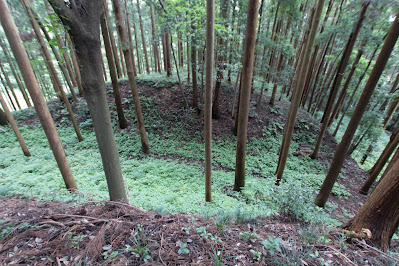





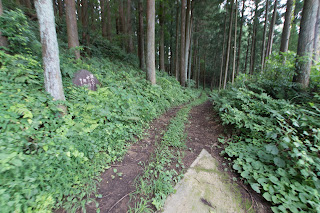
































































































































































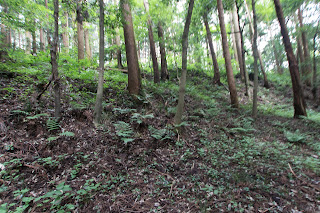




























































































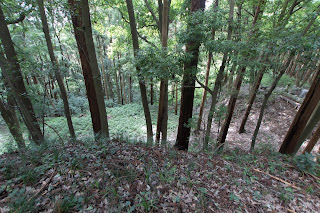














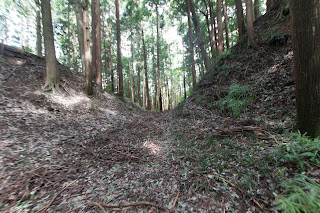

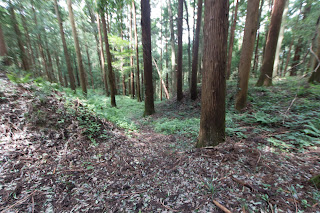










No comments:
Post a Comment